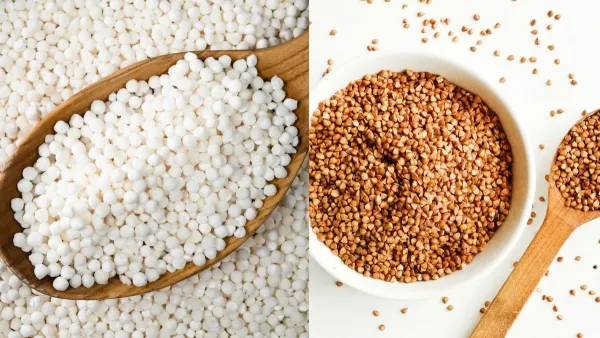
Navratri Fast-Friendly Grains: Hindus celebrate the nine-day holiday of Navratri with great excitement and zeal all around the nation. The nine manifestations of Maa Durga are honored during this occasion. The event, also called Chaitra Navratri, is celebrated during the month of Chaitra, which often occurs in March or April.

March 20 marked the start of Chaitra Navratri 2025, which will run until April 7. Devotees fast and offer prayers to Maa Durga over these nine days. Alcohol, pork, garlic, onions, and other tamsik delicacies are among the things that devotees abstain from eating. During these nine days, sattvik meals are mostly eaten during the fast. In order to keep the devotees energized during Navratri, several fast-friendly grain varieties are ingested.
In order to maintain a spiritually satisfying and nutritionally balanced fast during Navratri, a number of nutrient-rich grains are ingested instead of conventional mainstays like wheat and rice. These grains help with digestion and cleansing, which keeps the body feeling light and renewed, in addition to giving you energy during the celebration. The five kinds of grains that are eaten during Navratri are listed below.
During Navratri fasts, this is one of the most popular fast-friendly grains. Made from cassava root, sabudana is a rapid source of energy and is strong in carbs. This is used to make kheer, vadas, and sabudana khichdi.
This grain, also called buckwheat, is eaten throughout this nine-day celebration. Protein, fiber, and magnesium are all abundant in kuttu. Any kind of sattvik side dish is often eaten with kuttu wali puris and parathas.
Dried water chestnuts that have been ground into flour are used to make Singhara Atta, also known as wheat chestnut. These provide a lot of protein and fiber and are naturally gluten-free. They are a vrat-friendly substance that is very low in calories and high in energy. It is used to make cheelas, puris, samosas, and parathas.
These are made from amaranth flour and are a fantastic source of calcium, iron, fiber, and protein. It may be used to make roti, dosa, upma, and even puddings, and it is gluten-free. It helps sustain energy levels throughout the fasting period and is a nutritional powerhouse.
Often eaten during the fasting season, this is also referred to as barnyard millet. Other names for this grain include sama grains, samo seeds, samvat grain, and sama seeds. It is devoid of gluten, high in protein and fiber, and gives you sustained energy. Samak rice may be used to create dosa, pulao, khichdi, and kheer.